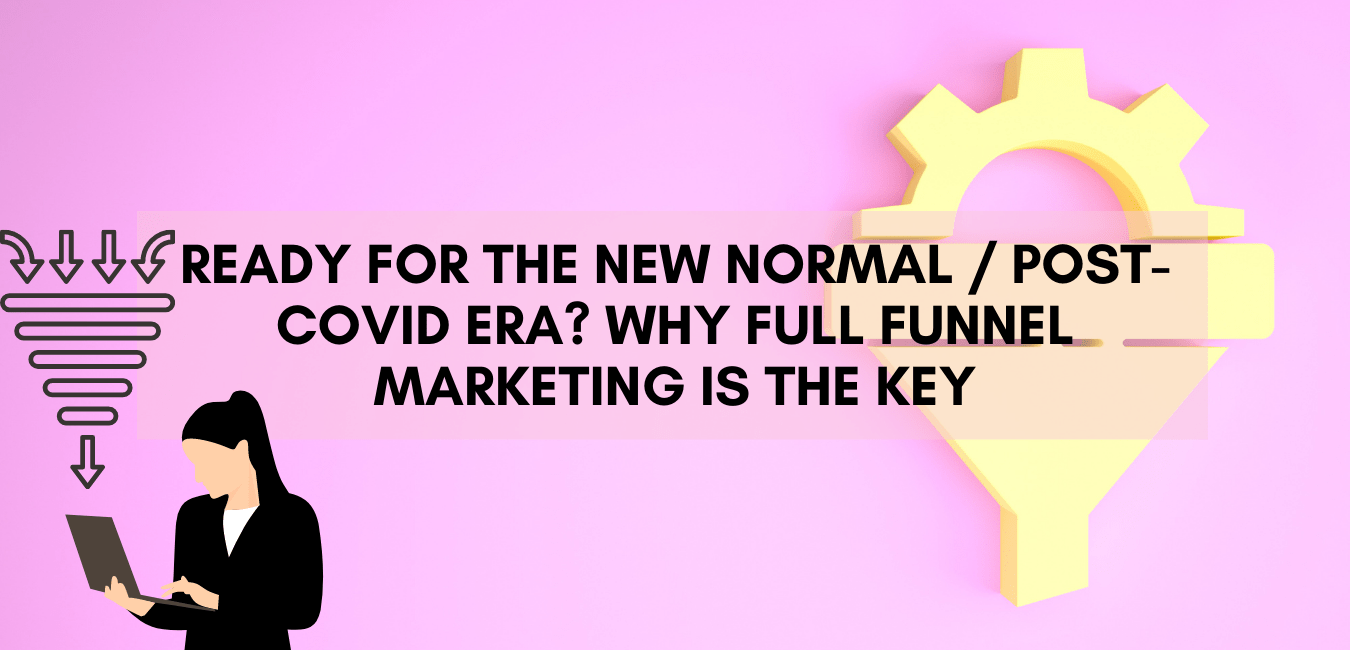When we say “funnel,” we’re referring to the marketing funnel, which outlines the most straightforward journey your customer might take in the path to purchase. The top of the marketing funnel represents shoppers in the awareness stage, and the bottom of the funnel represents shoppers in the purchasing stage.
Marketing funnels are linear; customer journeys are not.

Why now
While the idea of full-funnel marketing has been around for years, most companies have been unable to overcome the organizational and technological barriers to implementing it effectively.
There are several reasons why now is a critical time for marketers to lean into full-funnel marketing.
- Performance – marketing returns have recently plateaued or declined.
- Widely available automation tools have commoditized performance marketing execution, making it difficult to secure a significant competitive advantage.
- Dramatic changes in customer behavior.
Driving full-funnel marketing is particularly necessary given the dramatic changes in customer behavior seen during the COVID-19 pandemic. This year, more than 60 percent of consumers tried a new shopping behavior in response to economic pressures, store closings, or changing priorities, one-third of whom experimented with a different product brand.

This wave of data on new behaviors has provided marketers with a windfall in developing a better understanding of what their customers want and how they make decisions across the entire funnel, offering an opportunity to both win new customers and ensure the loyalty of existing ones.
Four essentials of full-funnel marketing
-
Brand-building measurement
Traditional advertising such as TV ads, billboards, newspapers, have long suffered from a tracking problem. While these offer potential large reach numbers of consumers and powerful emotional responses their incapability prevents marketers from collecting detailed insights on how exactly the campaigns are impacting consumer behavior.
With consumers shifting behavior toward the internet internet TV and digital streaming services, including audio this is starting to change. These options give marketers far greater visibility into who is seeing their ads and allows them to show different ads to different households that are watching or listening to the same program.


-
A unified set of KPIs
Linking KPIs between channels and stages of the funnel to actual business results, such as conversions or leads, allows companies to better understand the real impact of their marketing and then create messages that will elicit the best responses.
This unified view also helps marketers figure out how different touch points throughout the funnel affect each other and to identify the metrics that matter most.

-
An updated media mix model for integrated spending
Many marketers now rely on media mix models (MMM) to measure the impact of their campaigns and determine how much money they should spend on different types of advertising and marketing.


While MMMs have proven useful for making allocation decisions, they fall short in a number of ways. Because they require long look-back periods to estimate the impact of each type of spend, they aren’t responsive to short-term changes, such as shifts in campaign performance, or changes in shopping behavior due to external factors, such as those we are seeing today.
To make MMMs more reliable and better suited to a full-funnel marketing strategy, organizations need to modernize them with additional inputs, such as those from incrementality tests and multitouch attribution (MTA) models.
Doing regular incrementality tests can provide a cleaner verification of a particular channel’s performance, as well as insights that are closer to real-time and more granular data on campaigns.
This will help assess the true impact of their efforts and adjust the attribution for a channel accordingly.
-
A full-funnel operating model
Full-funnel marketing requires a complete top-to-bottom integration of the function; it can’t simply be tacked onto existing daily processes. That starts with rethinking how work gets done across functions. While the transformation of an operating model requires changes across almost all elements of the marketing function, four areas are the most important to get right:
Full-funnel marketing is not just a campaign strategy; it’s a total shift in how marketing works. It demands close team collaboration to harness the complete range of marketing capabilities to increase the impact from all campaigns. Most importantly, it allows the CMO to provide the C-suite with a much richer and more complete picture of how exactly marketing is driving growth.

Also read, HOW APPLE’S RECENT IOS 14 UPDATE CAN AFFECT YOUR ADS – WHAT CAN YOU DO ABOUT IT

